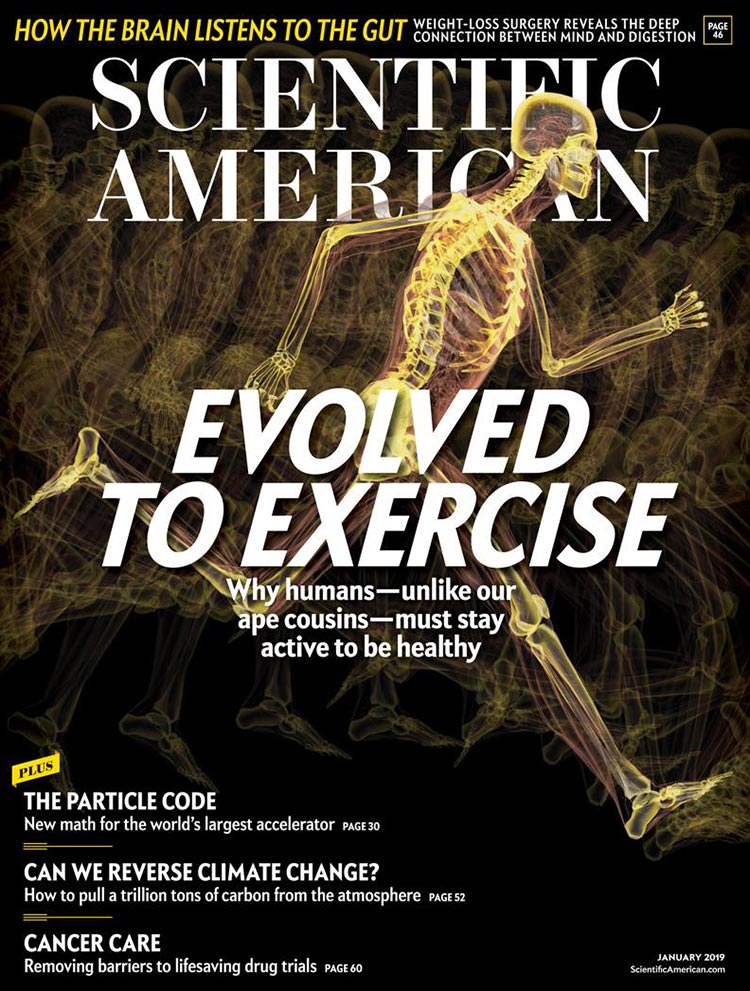Stein’s Law and Science’s Mission
The case for scientific humanism
In the April 2001 issue of Scientific American, I began this column with an entry entitled “Colorful Pebbles and Darwin’s Dictum,” inspired by the British naturalist’s remark that “all observation must be for or against some view, if it is to be of any service.” Charles Darwin penned this comment in a letter addressing those critics who accused him of being too theoretical in his 1859 book On the Origin of Species. They insisted that he should just let the facts speak for themselves. Darwin knew that science is an exquisite blend of data and theory. To these I add a third leg to the science stool—communication. If we cannot clearly convey our ideas to others, data and theory lie dormant.
For 214 consecutive months now, I have tried to communicate my own and others’ thoughts about the data and theory of science as clearly as I am able. But in accordance with (Herb) Stein’s Law—that things that can’t go on forever won’t—this column is ending as the magazine redesigns, a necessary strategy in the evolution of this national treasure, going on 174 years of continuous publication. I am honored to have shared a fleeting moment of that long history, grateful to the editors, artists and production talent for every month I was allowed to share my views with you. I will continue doing so elsewhere until my own tenure on this provisional proscenium ends (another instantiation of Stein’s Law)—many years in the future, nature and chance willing— so permit me to reflect on what I think science brings to the human project of which we are all a part.
Modern science arose in the 16th and 17th centuries following the Scientific Revolution and the adoption of scientific naturalism— the belief that the world is governed by natural laws and forces that are knowable, that all phenomena are part of nature and can be explained by natural causes, and that human cognitive, social and moral phenomena are no less a part of that comprehensible world. In the 18th century the application of scientific naturalism to the understanding and solving of human and social problems led to the widespread embrace of Enlightenment humanism, a cosmopolitan worldview that esteems science and reason, eschews magic and the supernatural, rejects dogma and authority, and seeks to understand how the world works. Much follows. Most of it good.
Human progress, which has been breathtaking over the past two centuries in nearly every realm of life, has principally been the result of the application of scientific naturalism to solving problems, from engineering bridges and eradicating diseases to extending life spans and establishing rights. This blending of scientific naturalism and Enlightenment humanism should have a name. Call it “scientific humanism.”
It wasn’t obvious that the earth goes around the sun, that blood circulates throughout the body, that vaccines inoculate against disease. But because these things are true and because Nicolaus Copernicus, William Harvey and Edward Jenner made careful measurements and observations, they could hardly have found something else. So it was inevitable that social scientists would discover that people universally seek freedom. It was also inevitable that political scientists would discover that democracies produce better lives for citizens than autocracies, economists that market economies generate greater wealth than command economies, sociologists that capital punishment does not reduce rates of homicide. And it was inevitable that all of us would discover that life is better than death, health better than illness, satiation better than hunger, happiness better than depression, wealth better than poverty, freedom better than slavery and sovereignty better than suppression.
Where do these values exist to be discovered by science? In nature—human nature. That is, we can build a moral system of scientific humanism through the study of what it is that most conscious creatures want. How far can this worldview take us? Does Stein’s Law apply to science and progress? Will the upward bending arcs of knowledge and wellbeing reach a fixed upper ceiling?
Remember Davies’s Corollary to Stein’s Law—that things that can’t go on forever can go on much longer than you think. Science and progress are asymptotic curves reaching ever upward but never touching omniscience or omnibenevolence. The goal of scientific humanism is not utopia but protopia—incremental improvements in understanding and beneficence as we move ever further into the open-ended frontiers of knowledge and wisdom. Per aspera ad astra.



January 28th, 2019 at 7:32 pm
Thank you, Michael Shermer, for 214 consecutive meditations on truth and the nature of reality. I will miss seeing your sometimes mordant, sometimes melancholy, always wise arguments in the back pages of Scientific American.